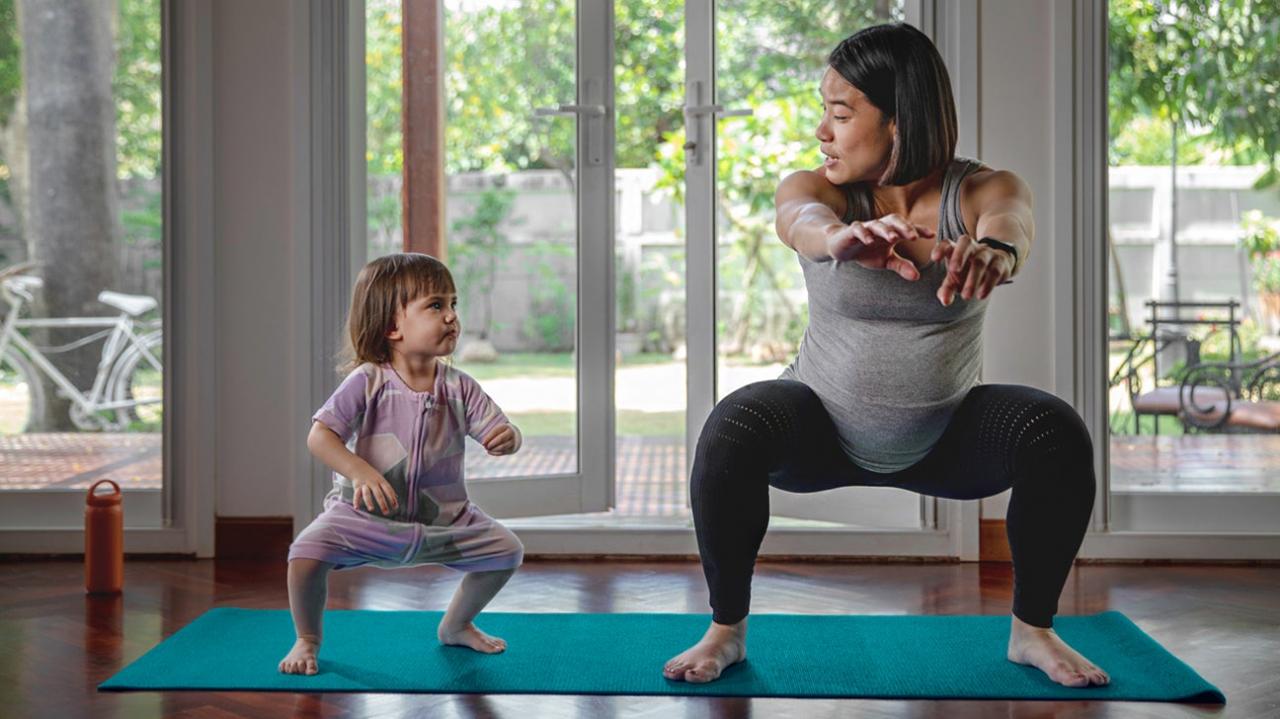Prenatal Exercises For A Healthy Pregnancy
Share

Pregnancy is a time of profound transformation for both the body and the mind. As expectant mothers embark on the incredible journey of bringing new life into the world, it is essential to prioritize their physical well-being. Prenatal exercises offer a holistic approach to maintaining a healthy pregnancy, supporting both the mother and the baby throughout this miraculous nine-month period. In this article, we will explore the benefits of prenatal exercises and provide guidance on how to incorporate them into your daily routine for a healthier, happier pregnancy.

Benefits of Prenatal Exercises
One of the key is that they can help improve your overall health and well-being during pregnancy. Regular exercise can help reduce aches and pains, improve circulation, and increase energy levels.
Additionally, prenatal exercises can help prepare your body for labor and delivery. Strengthening your muscles, especially your core muscles, can make it easier for you to push during labor. Exercises that focus on pelvic floor muscles can also help prevent urinary incontinence postpartum.
Furthermore, prenatal exercises can help reduce stress and improve mood. Physical activity releases endorphins, which are known as ”feel-good” hormones. Staying active can help combat pregnancy-related mood swings and anxiety.
Overall, incorporating prenatal exercises into your routine can lead to a healthier and more comfortable pregnancy experience. Remember to consult with your healthcare provider before starting any new exercise regimen.
Tailored Exercise Regimens for Each Trimester
Staying active during pregnancy is important for both the mother and the baby. However, it’s crucial to adjust your exercise routine as your body goes through different stages of pregnancy. Tailoring your exercise regimen to each trimester can help you stay fit and healthy throughout your pregnancy.
First Trimester:
- Focus on low-impact exercises like walking, swimming, and prenatal yoga.
- Avoid exercises that involve lying flat on your back after the first trimester.
- Listen to your body and take breaks when needed.
Second Trimester:
- Continue with low-impact exercises, but consider adding strength training with light weights.
- Avoid exercises that involve jumping or sudden changes in direction.
- Stay hydrated and pay attention to any signs of overexertion.
By customizing your exercise routine to each trimester, you can ensure that you’re providing your body with the right type and amount of physical activity. Remember to always consult with your healthcare provider before starting any new exercise regimen during pregnancy.
Recommended Prenatal Exercises for Cardiovascular Health
During pregnancy, maintaining cardiovascular health is important for both the mother and the baby. Incorporating prenatal exercises into your routine can help improve circulation, reduce the risk of gestational diabetes, and keep both you and your baby healthy.
Here are some recommended prenatal exercises that focus on cardiovascular health:
- Walking: Walking is a low-impact exercise that is safe for most pregnant women. Try to aim for at least 30 minutes of brisk walking each day to get your heart pumping.
- Swimming: Swimming is a fantastic way to work out your entire body without putting too much strain on your joints. It also helps improve circulation and is a great way to stay cool during pregnancy.
- Cycling: Using a stationary bike is a safe way to get your heart rate up during pregnancy. Just make sure to adjust the resistance level to a comfortable setting.
Remember to always consult with your healthcare provider before starting any new exercise routine during pregnancy. Listen to your body, stay hydrated, and don’t push yourself too hard. With these recommended prenatal exercises, you can help maintain your cardiovascular health throughout your pregnancy.
How Yoga and Pilates Can Benefit Pregnant Women
During pregnancy, staying active is crucial for both the health of the mother and the baby. Incorporating yoga and Pilates into your routine can offer a wide array of benefits for pregnant women. These low-impact exercises focus on strengthening the body, improving flexibility, and promoting relaxation.
One of the key benefits of practicing yoga and Pilates during pregnancy is the emphasis on breathing techniques. Learning how to breathe deeply and mindfully can help reduce stress, promote better sleep, and prepare the body for labor. Additionally, both yoga and Pilates can help alleviate common pregnancy discomforts such as back pain, swelling, and fatigue.
Yoga also offers a range of poses specifically designed for pregnant women, such as Cat-Cow, Child’s Pose, and Prenatal Sun Salutations. These poses can help improve balance, circulation, and pelvic floor strength. On the other hand, Pilates focuses on strengthening the core muscles, which can aid in maintaining proper posture and preventing back pain.
- Improved flexibility and muscle tone
- Reduced stress and anxiety levels
- Better posture and body awareness
As you journey through the beautiful, miraculous experience of pregnancy, remember to prioritize your health and well-being with prenatal exercises. By staying active and fit, you are not only benefiting your own body, but also nurturing the tiny life growing inside you. Embrace this special time and pamper yourself with self-care through movement and exercise. Your body and baby will thank you for it. Here’s to a healthy, happy pregnancy!





